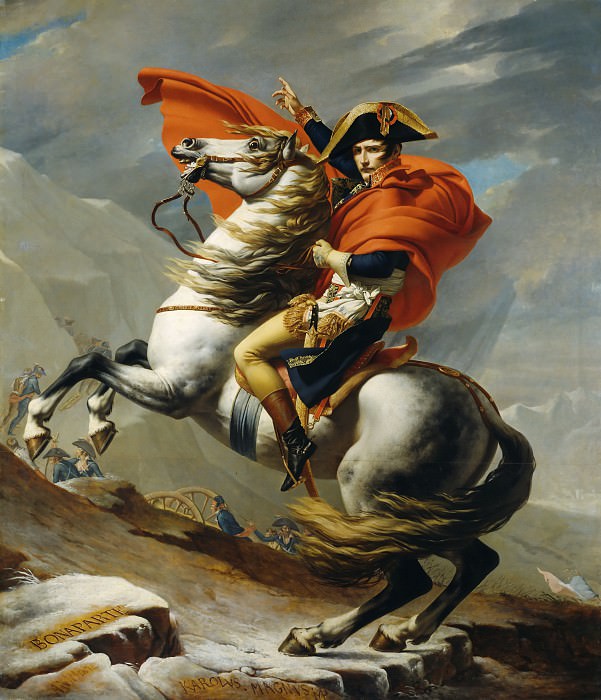Augusta Savage Art: An Exploration of Legacy and Innovation
Augusta Savage was a pioneering American sculptor and educator whose work left an indelible mark on the art world and on the African American cultural landscape. Born in 1892 in Green Cove Springs, Florida, Savage overcame significant racial and gender barriers to become a prominent figure in the Harlem Renaissance. Her art, characterized by its profound emotional depth and technical mastery, continues to inspire and challenge audiences today.
Early Life and Influences
Augusta Savage's journey into the world of art began in a small town with limited resources, yet her early experiences were rich in cultural and familial support. Her parents recognized her artistic talent from a young age, encouraging her to pursue her passion despite the societal constraints of the time. Savage's artistic development was profoundly influenced by her experiences in Harlem, where she became an integral part of the Harlem Renaissance—a cultural movement that celebrated African American artistic expression and sought to redefine racial identity through art.
Artistic Achievements and Signature Works
Savage's oeuvre is distinguished by its emotive power and innovative use of materials. One of her most renowned pieces is the "Lift Every Voice and Sing" sculpture, which was created for the Harlem Community Art Center. This work, also known as "The Harp," symbolizes the strength and resilience of the African American community. The sculpture captures the essence of the struggle for civil rights and the collective spirit of hope and perseverance.
Another significant work by Savage is "Gamin," a sculpture that portrays a young African American boy with striking realism and tenderness. The piece reflects Savage's ability to capture the essence of her subjects with empathy and precision, highlighting the beauty and dignity of everyday life. "Gamin" was exhibited at the 1939 New York World's Fair, earning critical acclaim and cementing Savage's reputation as a leading artist of her time.
Savage's art is also notable for its exploration of themes related to identity, heritage, and social justice. Her work often features portraits and busts that reveal the inner strength and complexity of her subjects. Through her sculptural techniques, Savage was able to convey not only the physical attributes of her subjects but also their emotional and psychological depth.
Educational Contributions and Legacy
In addition to her accomplishments as a sculptor, Augusta Savage was a dedicated educator who played a crucial role in nurturing the next generation of African American artists. She established the Harlem Community Art Center in 1937, which provided a space for young artists to develop their skills and gain exposure. Savage's commitment to education was driven by her belief in the transformative power of art and its ability to foster social change.
Her teaching philosophy was deeply rooted in the idea that art should be accessible to all, regardless of background or socioeconomic status. Savage's influence extended beyond the classroom, as she mentored numerous artists who went on to achieve significant success in their own right. Her legacy as an educator is a testament to her dedication to the arts and her belief in the potential of every individual.
Recognition and Impact
Despite facing significant challenges throughout her career, including racial discrimination and economic hardship, Augusta Savage's work received widespread recognition and acclaim. She was awarded numerous honors for her contributions to the arts, and her work was featured in prestigious exhibitions across the United States. Savage's impact on the art world is evident in the continued relevance of her work and the ongoing appreciation of her contributions to American art and culture.
Savage's art continues to resonate with contemporary audiences, as it addresses universal themes of struggle, resilience, and hope. Her ability to capture the human experience with such clarity and depth ensures that her work remains powerful and relevant. The enduring nature of Savage's art is a testament to her skill as a sculptor and her commitment to exploring the complexities of the human condition.
The Art of Augusta Savage Today
Today, Augusta Savage's work is celebrated in museums and galleries across the world, and her legacy is preserved through various retrospectives and exhibitions. Her art is studied by scholars and appreciated by art enthusiasts, who recognize the significance of her contributions to the field of sculpture. Savage's work is also featured in various public collections, ensuring that her art remains accessible to future generations.
The continued interest in Augusta Savage's art speaks to the lasting impact of her work and the enduring relevance of her themes. Her sculptures serve as a reminder of the power of art to convey profound truths and to challenge societal norms. As an artist and educator, Savage's influence extends far beyond her lifetime, continuing to inspire and engage audiences with her visionary approach to art.
Conclusion
Augusta Savage's artistic achievements and educational contributions have left a lasting legacy that continues to shape the art world today. Her work, characterized by its emotional depth and technical innovation, remains a powerful testament to her skill and vision. As we explore and celebrate the art of Augusta Savage, we honor her contributions to American culture and recognize the enduring significance of her work in the ongoing dialogue about identity, justice, and the human experience.
Augusta Savage was a pioneering American sculptor and educator whose work left an indelible mark on the art world and on the African American cultural landscape. Born in 1892 in Green Cove Springs, Florida, Savage overcame significant racial and gender barriers to become a prominent figure in the Harlem Renaissance. Her art, characterized by its profound emotional depth and technical mastery, continues to inspire and challenge audiences today.
Early Life and Influences
Augusta Savage's journey into the world of art began in a small town with limited resources, yet her early experiences were rich in cultural and familial support. Her parents recognized her artistic talent from a young age, encouraging her to pursue her passion despite the societal constraints of the time. Savage's artistic development was profoundly influenced by her experiences in Harlem, where she became an integral part of the Harlem Renaissance—a cultural movement that celebrated African American artistic expression and sought to redefine racial identity through art.
Artistic Achievements and Signature Works
Savage's oeuvre is distinguished by its emotive power and innovative use of materials. One of her most renowned pieces is the "Lift Every Voice and Sing" sculpture, which was created for the Harlem Community Art Center. This work, also known as "The Harp," symbolizes the strength and resilience of the African American community. The sculpture captures the essence of the struggle for civil rights and the collective spirit of hope and perseverance.
Another significant work by Savage is "Gamin," a sculpture that portrays a young African American boy with striking realism and tenderness. The piece reflects Savage's ability to capture the essence of her subjects with empathy and precision, highlighting the beauty and dignity of everyday life. "Gamin" was exhibited at the 1939 New York World's Fair, earning critical acclaim and cementing Savage's reputation as a leading artist of her time.
Savage's art is also notable for its exploration of themes related to identity, heritage, and social justice. Her work often features portraits and busts that reveal the inner strength and complexity of her subjects. Through her sculptural techniques, Savage was able to convey not only the physical attributes of her subjects but also their emotional and psychological depth.
Educational Contributions and Legacy
In addition to her accomplishments as a sculptor, Augusta Savage was a dedicated educator who played a crucial role in nurturing the next generation of African American artists. She established the Harlem Community Art Center in 1937, which provided a space for young artists to develop their skills and gain exposure. Savage's commitment to education was driven by her belief in the transformative power of art and its ability to foster social change.
Her teaching philosophy was deeply rooted in the idea that art should be accessible to all, regardless of background or socioeconomic status. Savage's influence extended beyond the classroom, as she mentored numerous artists who went on to achieve significant success in their own right. Her legacy as an educator is a testament to her dedication to the arts and her belief in the potential of every individual.
Recognition and Impact
Despite facing significant challenges throughout her career, including racial discrimination and economic hardship, Augusta Savage's work received widespread recognition and acclaim. She was awarded numerous honors for her contributions to the arts, and her work was featured in prestigious exhibitions across the United States. Savage's impact on the art world is evident in the continued relevance of her work and the ongoing appreciation of her contributions to American art and culture.
Savage's art continues to resonate with contemporary audiences, as it addresses universal themes of struggle, resilience, and hope. Her ability to capture the human experience with such clarity and depth ensures that her work remains powerful and relevant. The enduring nature of Savage's art is a testament to her skill as a sculptor and her commitment to exploring the complexities of the human condition.
The Art of Augusta Savage Today
Today, Augusta Savage's work is celebrated in museums and galleries across the world, and her legacy is preserved through various retrospectives and exhibitions. Her art is studied by scholars and appreciated by art enthusiasts, who recognize the significance of her contributions to the field of sculpture. Savage's work is also featured in various public collections, ensuring that her art remains accessible to future generations.
The continued interest in Augusta Savage's art speaks to the lasting impact of her work and the enduring relevance of her themes. Her sculptures serve as a reminder of the power of art to convey profound truths and to challenge societal norms. As an artist and educator, Savage's influence extends far beyond her lifetime, continuing to inspire and engage audiences with her visionary approach to art.
Conclusion
Augusta Savage's artistic achievements and educational contributions have left a lasting legacy that continues to shape the art world today. Her work, characterized by its emotional depth and technical innovation, remains a powerful testament to her skill and vision. As we explore and celebrate the art of Augusta Savage, we honor her contributions to American culture and recognize the enduring significance of her work in the ongoing dialogue about identity, justice, and the human experience.




